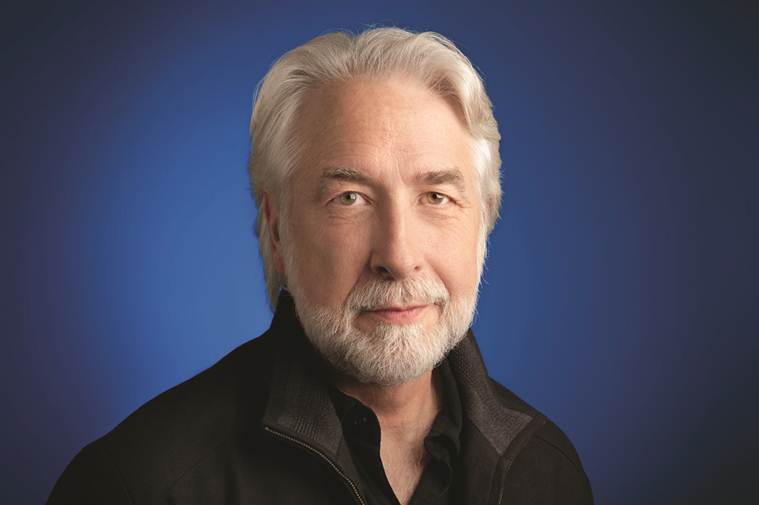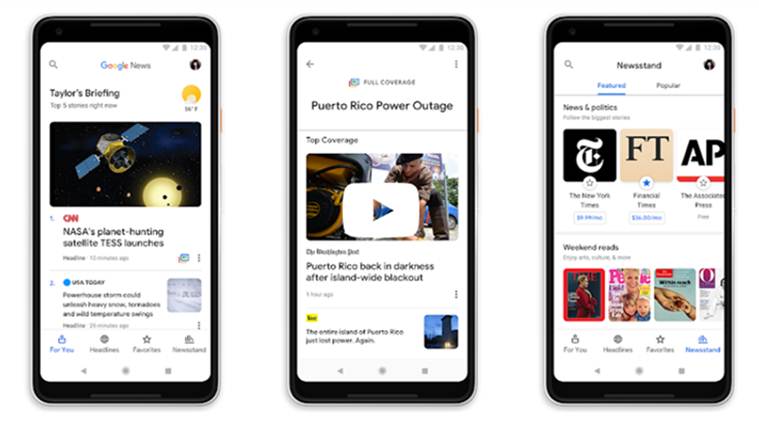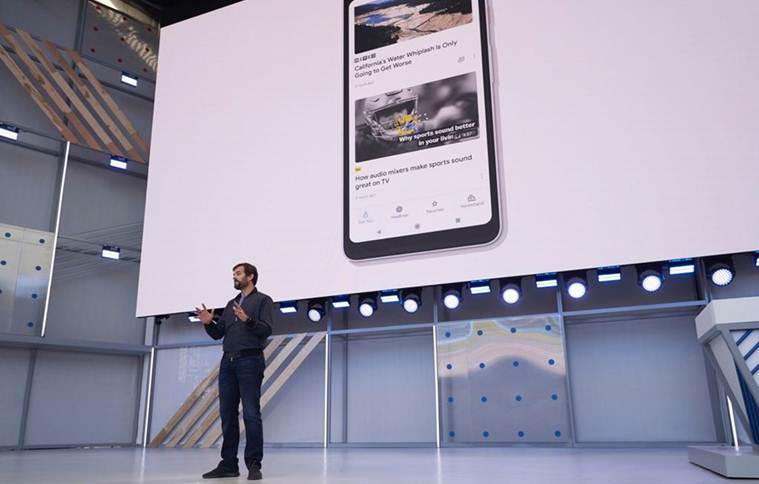 The redesign of Google News also comes at a time when news publishers are struggling with ad revenues. (Image: Richard Gingras, Vice President for Google News)
The redesign of Google News also comes at a time when news publishers are struggling with ad revenues. (Image: Richard Gingras, Vice President for Google News)
Among the many products getting an update around Google I/O, the search giant’s annual developer conference, is Google News. Google is effectively killing the multiple products it has for news making the Google News app the focus with new features like personalised feeds driven by artificial intelligence and machine learning along with the ability to follow publishers and news sources as well as pay for their content with a new ‘Subscribe with Google’ feature.
“News is important to us, to our society and is vital to our nature of business. We look at these efforts, with the lens of how do we enable a great visual experience for users while at the same time enabling a healthy ecosystem of quality journalism,” explained Richard Gingras, Vice President for Google News in an interaction with indianexpress.com at the developer conference.
The redesign of Google News also comes at a time when news publishers are struggling with ad revenues, particularly in the West. There’s also the problem of fake news, which often tends to spread faster on the internet. With Google News’ redesign ‘For You’ feed, the app will show the content that a user will likely be interested in, based on one’s reading habits, the topics which they might have searched for the most in the past, etc. The idea, according to Gingras, is to help people get the “best information on the areas of interest” which matter to them.
One of the concerns with a personalised feed is whether it will end up hurting traffic for news websites, which might not show among a user’s preferred choices. The other question for publishers would be on how to make sure they rank on top of the Google News ‘Headlines’ Section, which is not personalised.
“So I get asked this question a lot. What do I need to do as a publisher to rank well? Well I always say do good content. We think that when you look at a story, it is important to highlight the difference between a news story and an opinion. Algorithmically we try and sort opinion vs news. Will we get it wrong sometimes? Yes, then we rely on publisher cues, ” said Gingras.
 Google News is crowd-sourcing decisions of editors around the world and they do not have any human editors deciding which story or event comes on top.
Google News is crowd-sourcing decisions of editors around the world and they do not have any human editors deciding which story or event comes on top.
And what about weeding out fake news or removing publishers who spread misinformation? Google News, like Google Search, will rely on highlighting content from more authoritative sources, explained Gingras. “The objective is how do we determine sites which are more authoritative. We do this in search all the time. We need to rely on various signals to understand, which sources are particularly relevant and which ones are not. We have many signals to do that, we surface results to people, to help them determine which article is good, which article is not good. So there are hundreds of thousands of data points helps us to build content around web where we may not have the expertise,” said the Google News VP, while admitting that the algorithm will not always get it right.
However, Gingras said Google will not make judgement calls about editorial quality. “We by intent don’t make calls about editorial quality. We don’t play God and decide oh you’re a good news organisation and you are not,” he explained.
When it comes to fake news, Gingras gave the example of the Vegas shooting and how they had 21 million queries at the time. “Those situations are magnets for bad actors. Our systems automatically detect a breaking news and we the shift the algorithms more towards authoritativeness. Situations of breaking news we will bias the system toward authority sources, which may mean that opinion pieces do not surface,” he pointed out.
The reason why opinion might get pushed down is that in some cases they could be misrepresentative of the facts in context. According to Gingras, Google News is crowd-sourcing decisions of editors around the world and they do not have any human editors deciding which story or event comes on top.
Trystan Upstill, Google News Engineering and Product Lead, explained that the company relies on 100 of signals to choose a story which comes on top of the Google News app, website. “Quality content, authority, publisher ranking, relevance… how much is the article really talking about the thing that it claims to talk about, all of this is factored in,” explained Upstill.
 “Often follow-up stories add more to the original. We do try and extend the life cycle of the original piece,” Trystan Upstill said.
“Often follow-up stories add more to the original. We do try and extend the life cycle of the original piece,” Trystan Upstill said.
But can the system differentiate between an original reported piece and a curation, which might just actually end up on top. Upstill admitted this is a challenging problem for Google to solve and they need to strike a balance. “Often follow-up stories add more to the original. We do try and extend the life cycle of the original piece,” he said.
The other idea that the Google News app wants to challenge is that of paid news subscriptions. The new ‘Subscribe with Google’ features wants to make it easier for users to access all paid subscription content with one simple account, instead of signing-in on various websites. It would mean that the user could access the paid content on Google News or on the publisher app with just one sign-in option. Google did not reveal the revenue share with publishers who sign up for this deal, though it said it was offering very competitive rates.
The new Google News app will roll out in 127 countries in the coming week on Android and iOS and web. It will support regional languages as well.